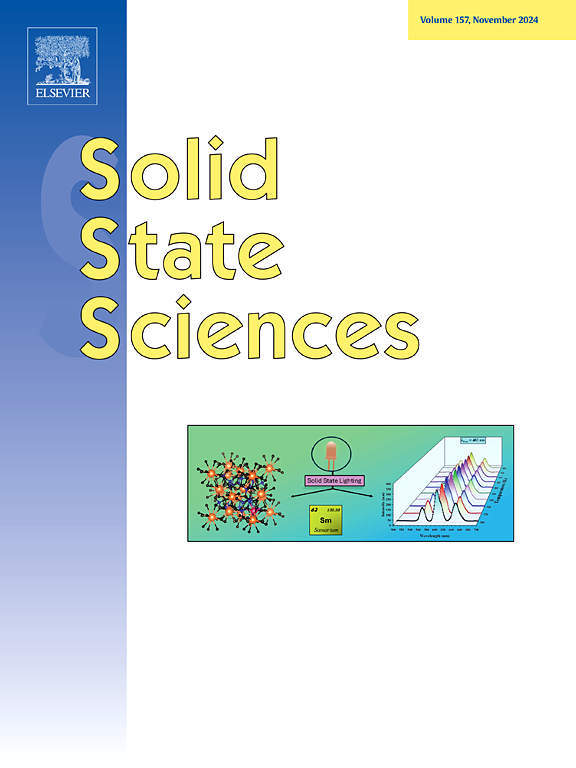以硅烷为还原剂和氧还原封盖剂合成超细PtAu固溶体纳米颗粒
IF 3.3
3区 化学
Q2 CHEMISTRY, INORGANIC & NUCLEAR
引用次数: 0
摘要
本文以叔丁基二甲基硅基氢化物(t-BuMe2SiH)为还原剂和稳定剂,在N,N-二甲基乙酰胺(DMA)溶剂体系中制备了Pt-Au合金固溶体纳米颗粒。不同Pt和Au比例的金属合金固溶体纳米颗粒尺寸为3 ~ 5 nm,均匀分布在炭黑表面。与水溶液相比,DMA溶剂分子可以降低不同金属反应物之间的电极电位,防止纳米颗粒团聚,有利于制备单分散合金固溶体纳米颗粒,具有不可否认的优势。电催化实验结果表明,Pt/Au比为2:1的合金固溶体催化剂(Pt67Au33/C)在氧还原反应中表现出最高的质量活性和比活性,分别是商用Pt/C (JM)催化剂的10倍和2.9倍,且具有良好的稳定性。该催化剂的合成策略具有一定的通用性,也可用于合成其他合金固溶体催化剂,为制备高氧还原反应活性的新型催化剂提供了新的思路。本文章由计算机程序翻译,如有差异,请以英文原文为准。

Synthesis of ultra-fine PtAu solid-solution nanoparticles using silane as the reductant and capping agent for oxygen reduction reaction
Herein, Pt-Au alloy solid solution nanoparticles were successfully prepared in N,N-dimethylacetamide (DMA) solvent system using tert-butyldimethylsilyl hydride (t-BuMe2SiH) as the reducing agent and stabilizer at room temperature. The metal alloy solid solution nanoparticles of different Pt and Au ratios were 3–5 nm in size and uniformly distributed on carbon black. Compared with aqueous solution, DMA solvent molecules can reduce the electrode potential between different metal reactants and prevent nanoparticle agglomeration, which is conducive to the preparation of monodisperse alloy solid solution nanoparticles and has undeniable advantages. The results of electrocatalytic experiments show that the alloy solid solution catalyst with Pt/Au ratio of 2:1 (Pt67Au33/C) exhibits the highest mass activity and specific activity in oxygen reduction reaction, which are 10 times and 2.9 times of the commercial Pt/C (JM) catalyst, and has good stability. The synthesis strategy of the catalyst has a certain universality, and can also be used to synthesize other alloy solid solution catalysts, which provides a new idea for the preparation of new catalysts with high activity of oxygen reduction reaction.
求助全文
通过发布文献求助,成功后即可免费获取论文全文。
去求助
来源期刊

Solid State Sciences
化学-无机化学与核化学
CiteScore
6.60
自引率
2.90%
发文量
214
审稿时长
27 days
期刊介绍:
Solid State Sciences is the journal for researchers from the broad solid state chemistry and physics community. It publishes key articles on all aspects of solid state synthesis, structure-property relationships, theory and functionalities, in relation with experiments.
Key topics for stand-alone papers and special issues:
-Novel ways of synthesis, inorganic functional materials, including porous and glassy materials, hybrid organic-inorganic compounds and nanomaterials
-Physical properties, emphasizing but not limited to the electrical, magnetical and optical features
-Materials related to information technology and energy and environmental sciences.
The journal publishes feature articles from experts in the field upon invitation.
Solid State Sciences - your gateway to energy-related materials.
 求助内容:
求助内容: 应助结果提醒方式:
应助结果提醒方式:


